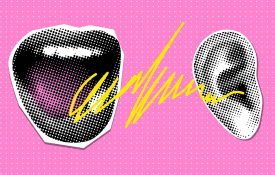-

That Sounds Right: Hearing Objects Helps Us Recognize Them More Quickly
Audio associations can help us recognize objects more quickly, suggesting that sounds can help us make fine-grained discriminations between objects, new research suggests.
-
Silence Is a ‘Sound’ You Hear, Study Suggests
The hush at the end of the musical performance. The pause in a dramatic speech. The muted moment when you turn off the car. What is it that we hear when we hear nothing at
-
Our Brains May Process Silence and Sounds the Same Way
Can you hear the sound of silence? It’s a question that may seem better suited to a philosophy class (or a Simon & Garfunkel concert) than a science lab, but a new study published today
-
Do We Actually ‘Hear’ Silence?
At a concert hall near Woodstock, N.Y., in August 1952, the pianist David Tudor played John Cage’s three-movement composition 4’33″. Doing so did not require enormous jumps with the right hand. Most people could play the
-

New Research in Psychological Science
A sample of research on aging, meditation and yoga, school punishment, acculturation, face-based judgments, auditory perception, working memory, and immigration.
-

Sound-Shape Associations Depend on Early Visual Experiences
Data from individuals with different types of severe visual impairment suggest that the associations we make between sounds and shapes — a “smooth” b or a “spiky” k — may form during a sensitive period of visual development in early childhood.

